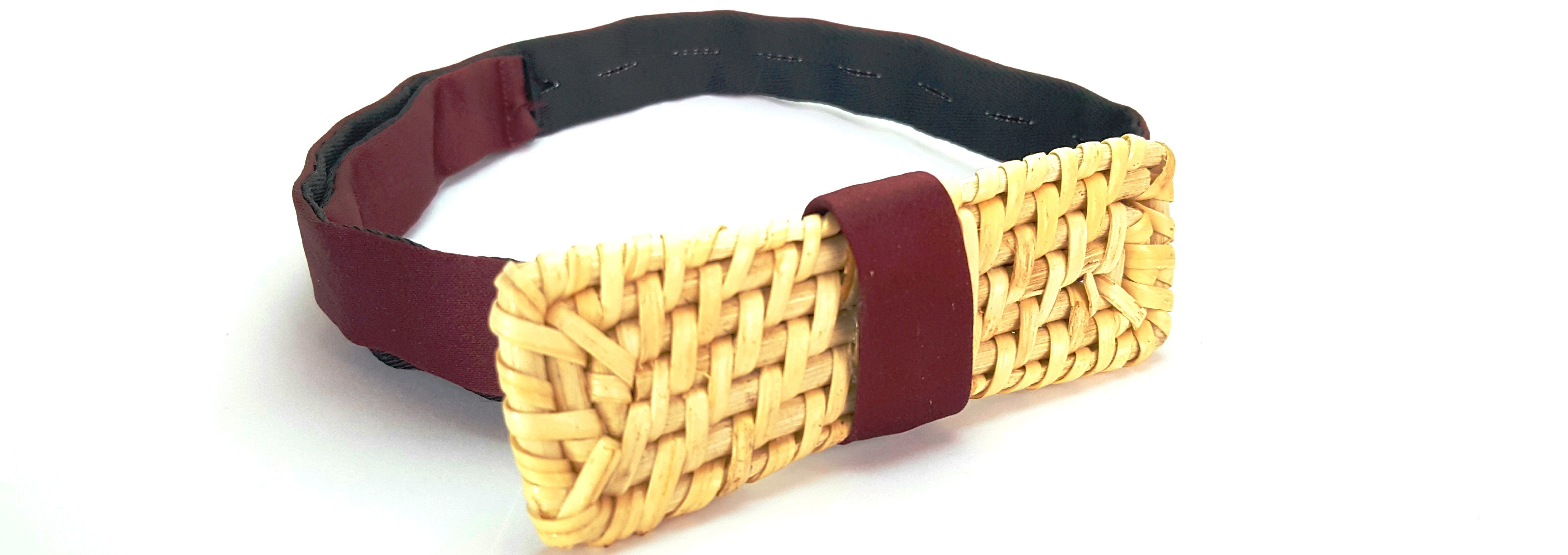- Daily & Weekly newsletters
- Buy & download The Bulletin
- Comment on our articles
Brussels expat wire artist branches into bowties
From Flanders Today: Racso Jugarap made one of those life decisions after moving to Brussels that few of us dare to make: He gave up his job to become a full-time artist.
Jugarap (pictured) had moved from his native Philippines to Germany in 2009 to work as a chef. He relocated for work a few times and wound up in Brussels about three years ago. And then he started creating wholly unique works of art.
He started with a base of wire woven to create web-like structures. Then he covered them with a plaster mix. The material hardens quickly, meaning he had only seconds to work with the hot substance. This leant the work an organic quality, less symmetrical than biological.
This look was not lost on Jugarap, who called the oval-shaped pieces “ostrich egg” (pictured below). Though he had no formal education in the arts, he did have persistence. Targeting more than 200 galleries in Brussels, he finally got a few of them to sit up and take notice.
“My ostrich egg is now one of the my best-selling pieces,” the 29-year-old says. Also popping up in the windows of sellers of fine home furnishings, “it’s scattered across Europe and the US”.
Making the ultimate leap
And it led to other opportunities: Flanders’ Tomorrowland, the biggest dance festival in the world, contacted Jugarap to create fashion accessories based on the look of the egg. He happily obliged, and last year some staff sported intricately woven neck pieces.
So he gave up his day job and rented studio space in Elsene. “It was a really big transition for me,” he admits, “a transition to not really knowing what was going to happen. I knew it would be a big risk, but I am so happy that I made the jump.”

He says that such a leap might not have happened in another country. “It’s really different from being an artist in the Philippines,” he says. “There are just so many supportive people here. you can really make a living out of your art in Brussels.”
Jugarap has since changed the course of his work. His newer pieces dispense with the plaster, leaving only the wire. He describes these sculptures as the “skeletons” of his initial work.
“I decided that the wire alone could say something. I made it simpler, and I think it has a totally different effect.”
The artist never followed formal training, but he did play around with wire a lot when he was a kid, using scraps lying about in his parents’ jewellery workshop. While studying hospitality management, he was hired for some interior design projects.
All of that shows in the sculptures. With nothing to cover the hand-crafted threading, the artisan quality of the works really shines through.
Orders pouring in
Like a proud parent, Jugarap attaches a first name to each sculpture. His eyes light up as he walks among them, pointing and saying: “This is my Mathilde” or “my Sofia”.
Inspiration, he says, is everywhere – from birds’ nests to literature to the colour of a dress. Not just any dress, but one being worn by the queen of Belgium – hence the name Mathilde.
“Kaya, one of my newer ones, represents a portal to somewhere,” he says. “It’s a teardrop shape with a vortex in it. I don’t know where it would go, it could be a portal to your dreams.
I hope that I can inspire people. From young to old, everyone dreams. That’s what I do every day.”
To fulfil his orders, now coming in from all over the world, Jugarap recreates many of his sculptures again and again. But they’re all hand-crafted.
He gets – and keeps – emails and letters he receives from his customers. “I’m always curious how my pieces look in people’s homes,” he explains. “That’s the proudest moment.”
Spurred by the Tomorrowland request and Brussels’ outstanding design scene in general, Jugarap has veered once again into fashion. He’s taken something seen as quite traditional – the man’s bowtie – and turned it into something fun and youthful, and even feminine.
Bowtie 2.0
Launching on Kickstarter next week, the rattan bowtie project employs women in southeast Asia, who hand weave each piece. “We are using recycled rattan fibres that are rejected by basket and furniture factories because they are too short, say, or not the right size. Normally they burn them or send them to a landfill.”

The bowties will be available to order on the Kickstarter site and, like the wire sculptures, they come in several designs with first names attached. While Bayani sports a centre ribbon with flowers, Virginia is a solid pastel. They were designed to be appealing to both men and women.
“Aside from promoting zero waste, we are contributing to the livelihood of women in southeast Asia, where I come from,” Jugarap explains. “Mostly they are women over 50, who unfortunately have a much harder time finding jobs than younger people.”
Jugarap hopes to get local shops interested in selling the bowties soon. Hopefully it won’t take 200 inquiries this time around.



















